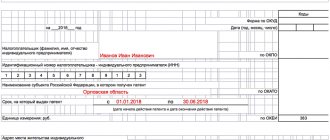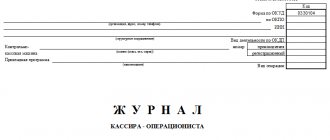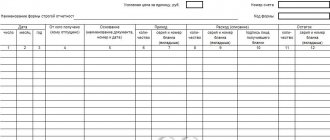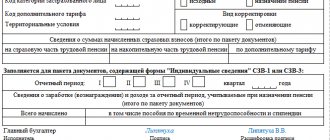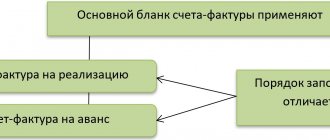What other information is in the General Ledger?
The General Ledger should display the balance at the end of the month and year, including turnover on credit and debit transactions. Here there is information about all financial transactions of the organization, restoration by costs. This is a kind of financial nomenclature, a large area of work.
Moreover, such a balance is not compiled in the General Ledger to indicate turnover.
And the balance sheet is written according to the information in the General Ledger, based on the accounting registers and the form of maintaining the document.
The General Accounting Ledger contains information from other documents on the organization’s balance sheet, primary documents containing data on the financial results of the company’s affairs. Moreover, the data in the General Ledger must be identical to other financial reporting documents, taking into account the forms of its completion and the department in the line. Together with the book, forms of primary documents are approved, and their restoration in case of loss of information.
Management and assignment
The general ledger is a summary document (a kind of journal) that is filled out within one calendar year. Maintaining a document for a longer period of time, for example, for several years, is not allowed.
All records are kept in strict chronological order, starting in January and ending in December of the reporting year. The general ledger must contain all the information on all synthetic accounts available at the enterprise (and of any form of ownership). That is, the general ledger is a reflection of all economic activities of the organization.
Why do you need a general ledger for an accountant?
First of all, for an accounting employee, this document is necessary to double-check his own work, since when entering information, all already processed operations are reviewed again.
That is, all current operations within one calendar year are carefully studied, information on them is posted in various audit journals (the initial stage of verification), and then all the same information is entered into this document (the final stage of verification).
For accounting, the importance of this kind of journal is difficult to overestimate - after all, its maintenance is the result and assessment of the professional activities of employees of the financial department.
Why is this document needed for the enterprise?
Its main purpose is to obtain information for drawing up a balance sheet. It includes information on opening and closing balances, as well as current turnover for each individual synthetic account. Naturally, the balance sheet of an enterprise is the most important indicator of its production and financial activities, and the fact that it goes through several stages of verification is an invaluable aid in analyzing annual work.
Financial discipline
The General Ledger indicates all the primary documents where the financial transaction of the company’s affairs was reflected, for example, an invoice, cash receipts and expenses, as well as data recovery (if necessary).
This document verifies the financial and cash discipline of the organization's affairs. An entrepreneur needs a general ledger; through it, one can identify financial problems, understand errors when filling out documents, taking into account the forms of its maintenance and restoration in case of data loss.
Registration of the General Ledger
Drawing up and maintaining the main book of accounting requires knowledge of financial affairs, accuracy, organization, and the correct form of filling. The general ledger is the first to be presented to government agencies when checking a company’s balance sheet, in particular, at the request of a tax organization, so it must be maintained correctly.
Employees of the inspection bodies can take for review some accounting documents, including primary documents listed in the General Ledger. Based on Articles 23-24 and Clause 12 of Art. 89 of the Tax Code of the Russian Federation, this provision also applies to documents related to the payment of taxes and financial charges. That is why novice managers and accountants need to know how to properly maintain the General Ledger. It must be drawn up in accordance with the document standards.
Instructions for use
The ledger form used at the enterprise is approved directly by the management of the organization and, after the publication of the order, becomes mandatory for use by accountants. You need to fill out the book in the following sequence:
- At the beginning of the work, the accountant must enter into the document the names and numbers of accounts, sub-accounts and sub-sub-accounts used by the company for settlements with other organizations and individuals and recorded in the company’s accounting policies.
- After entering the data, you must fill out the “Debit” and “Credit” columns in the account balances section at the start of the next reporting period.
- The third stage is the payment of amounts for all payments made by the company for the reporting period.
- The last stage of the work is to calculate the total amount of credit and debit at the end of the reporting period, enter data in the appropriate columns and check that they are filled out correctly (the amounts for debit and credit accounts must have the same values).
It is worth noting that in organizations that have licensed 1C accounting packages, general ledgers are generated automatically, so there is no need for manual accounting of expenses and receipts of funds in such companies.
If changes have been made to the ledger data, they must be certified by the signatures of the persons responsible for maintenance, with initials and a transcript of the signature. When executed electronically, the document must be certified by the electronic signature of the head of the enterprise or accountant.
In addition to data on current accounts, the journal must contain the following information:
- Title of the document.
- The name of the organization leading it.
- The year for which the ledger was compiled.
- The amount of measurement of accounting objects in monetary terms.
- Positions of persons responsible for maintaining reports in accordance with regulatory documents.
- Signatures of responsible persons with the data necessary for their unambiguous identification (deciphering the signature, initials and other details).
You can watch the formation of a document in the 1C program in the following video:
Content
Forms and standards for filling out the General Ledger:
- Document title: “General Ledger.”
- Legal name of the company.
- The reporting year when the General Ledger was opened.
- Signatures, surnames, initials and other data of officials.
- Accounting information, its restoration in case of loss.
- Monetary measurements by objects.
- Current account, cash register, accounting objects.
The general ledger is filled out according to the rules for documents of this type of case. After all, an experienced accountant knows how to manage them, his area of work.
Procedure for filling out the General Ledger
This book contains reporting documents, their names, numbers of all accounts, including the cash register. Then fill in the amounts for the calculations carried out by the company for the period of the financial statements. The next part of the work is calculating the total amount of debit and credit, the data is entered into the necessary columns of the ledger, their correctness is checked by numbers, including checking the filling out forms.
All these instructions must be approved by management, who need to know how to properly maintain documents.
The general ledger must be prepared according to the instructions.
How to create a general ledger
September 23, 2011 Author KakSimply! Before preparing the annual financial statements, a lot of preparatory work is carried out.
- How to file a cash book Question “How to make real money on the Internet?” — 6 answers Instructions 1 The general ledger is opened annually.
At the end of the reporting period, all operating accounts are closed, the accuracy of entries in synthetic and analytical accounts is checked, an inventory of property and liabilities is carried out, and order journals and the general ledger are closed.Each line of the book corresponds to a specific month, each account has its own spread. Every month, credit turnover in the context of debited accounts is transferred to the general ledger. In addition, the final debit turnover is recorded in it. After all amounts have been entered, check that the debit and credit turnovers are the same.
If equality is violated, you should look for an error in the transfer of data from order journals or entries in them. 2 After checking the data, debit and credit balances for all accounts are displayed.
Please remember that active accounts have a debit balance. It is calculated as the sum of the opening debit balance and debit turnover, then the credit turnover is subtracted from it. Passive accounts have a credit balance.
- How to check the balance sheet
Identity of information prohibition of corrections
Financial reporting forms, information on numbers in all documents must be identical everywhere. Corrections are not allowed in the General Ledger; the restoration of the truth in the numbers must be correct. And here, ignorance of how to properly maintain these documents will not save you from liability.
Fortunately, today the General Ledger is compiled in two versions: electronic and paper. In the first case, programs are used to automate financial balance sheet accounting, which simplifies the process for organizing accounting and in case it becomes necessary to restore data in case of loss (this happens). Moreover, entries in the General Ledger must be kept correctly.
Order on approval of accounting registers
Accounting registers - their list and forms must be approved by the relevant order. The forms of accounting registers are developed by the chief accountant, and the manager approves them.
Samples of maintaining tax registers can be found in the article “How to maintain tax registers (sample)?”
Such an order will necessarily be requested for review by the inspector during a tax audit. Based on the registers listed there, the tax inspector will request printouts of the forms he is interested in.
You can learn about how the audit will be carried out in the article “Procedure for conducting an on-site tax audit (nuances).”
After all, today almost all companies maintain registers in the form of machine diagrams.
And in accordance with paragraph 6 of Art. 10 of Law No. 402-FZ, registers must be drawn up either on paper or electronically and signed with a digital signature. Therefore, the registers will have to be printed or sent to the Federal Tax Service in the form of an electronic document signed with an electronic signature.
Often, the order approves register forms for each account: account card, balance sheet, account analysis. It is advisable to present the linkage of the formation of registers for accounting accounts in tabular form. You will need to indicate your full name in the table. responsible for maintaining the register.
A table listing registers can be displayed in an order like this:
| Account number | Account name | Detail Options | Formation of accounting registers | FULL NAME. person responsible for maintaining the register | ||||
| Synthetic accounting | Analytical accounting | Account Analysis | SALT | Account card for account credit | Account card | |||
| 01 | Fixed Assets (Fixed Assets) | Types of OS | OS objects | V | V | V | — | |
| 02 | Depreciation of fixed assets | OS objects | V | V | V | — | ||
| 03 | Profitable investments in material assets | Material assets - objects of investment | V | V | V | — | ||
| 04 | Intangible assets (IA) | Types of ON | Objects ON | V | V | V | — | |
Following the link you will find a sample of one of the accounting registers - this is a cash book.
A sample of how to fill it out can be found in our article “Procedure for maintaining and filling out a cash book - sample”
Accuracy of information
Debit turnover, taking into account the synthetic account, is noted in different journal orders when a credit entry is recorded.
Information regarding the debit for each account is revealed only after all the data from the journal orders has been entered into the General Ledger, the corresponding column or section of the table. Additional financial records are entered in a separate line or department.
Checking the correctness of the data in the General Ledger is carried out by calculating the amounts by turnover, including the balance of all accounts. The amounts obtained when calculating credit and debit turnover and balances must be identical.
What kind of document is this?
The general ledger (abbreviated as ledger) is the main financial accounting document in companies registered in Russia. It contains transaction data for all accounting accounts used by the enterprise.
For each account, the accounting department must enter the following data:
- Balance as of January 1 of the year for which the book is prepared.
- Turnovers on debit and credit accounts.
- Balance at the end of each month included in the reporting year.
According to the instructions for using order-journal accounting at enterprises, the amounts of debit and credit in each reporting period must be equal . In addition, the credit and debit account balances in each month should also have the same values.
The document is necessary for reporting to employees of inspection bodies, who almost always require it for review. In addition, from the ledger data it is easy to learn about typical errors in filling out regulatory documents, which are quite difficult to identify when checking, for example, reporting statements.
Why and how to write a receipt for the return of funds - see here.
Accounting department and information on documents
Accounting in production must be maintained properly.
Typically, large enterprises have an accounting and finance department.
At the same time, an experienced accountant should know: what is the main nomenclature for carrying out their activities, unified documents, forms and inspection reports for regulatory authorities, which are drawn up by them. Unified documents are usually published on the official web resources of the relevant companies.
The principle of drawing up these provisions is as follows: after the planned events of state supervision, unified documents are approved that are binding. Unified forms are approved by a resolution of the State Committee of Russia.
General ledger in accounting
The general ledger of accounting is a connection of all local information of the organization. The sample form can be downloaded for free.
- Description of the document
- /form
- View screenshot
- Related documents
filling [32.5 Kb] General ledger of accounting - is a combination of all local information presented on paper and electronic media.
Fixing annual parameters helps the finance department to carry out accounting correctly.
Today, there are a lot of electronic ways to record data, and in many institutions the general ledger is generated automatically.
The document is agreed upon and endorsed by management.
The main reporting act of the enterprise should be drawn up with the utmost care, without haste. Adjustments and corrections in it are not desirable.
A sample of filling out the accounting journal under discussion can be downloaded for free via a direct link on the page.
Score 62
The list of documents, the nomenclature of production activities and the correctness of calculations are important. The further development of the enterprise depends on this. In accounting, the greatest attention should be paid to account 62. Settlements according to account 62 are credited, taking into account funds and the amount of payments received.
Debit entries are made regarding accounts 51, 52 and 62. Analytics accounting according to account 62 is carried out based on each invoice submitted by the customer. Through analytical accounting, you can obtain the necessary data on buyers and customers of enterprises. The score, of course, is 62.
From this document, you can indirectly see the economic life of the seller, according to which account 62 occurs. Account 62 shows the debt when paying in advance or by bills. Debit 62 is written out along with credit 90.1, 90.2.
Fuel purchase
Particular attention should be paid to the purchase of fuels and lubricants, its accounting and balance. Moreover, fuels and lubricants are purchased in cash or by bank transfer. In the first option, fuel and lubricants are purchased by accountable persons, for example, drivers or the transport department. To do this, accountants need a nomenclature, that is, a list of persons who have the right to receive cash, have a cash register for reporting, and to purchase fuel and lubricants. When purchasing fuel, drivers need to show primary documents.
This provision requires that the documents must clearly indicate the name of gasoline, prices, number of liters, and the current account through which the transactions were carried out. Transactions are important when maintaining the General Ledger, especially when posting balances. The amount of money issued to drivers for the purchase of fuel and lubricants is negotiated with the head of the enterprise. When filling out documents, the main thing is to get an advance report from an accountant, taking into account fuel and lubricants.
According to experts, errors in accounting for fuel and lubricant transactions are possible when the money purchased for gasoline is written off in cash, since the amounts for expenses are overstated.
And with non-cash payments, when the invoice is issued by the company, accounting is not difficult.
Therefore, many companies do not approve of cash and ask for an invoice when ordering fuel, which is reviewed, for example, by the transport department.
glavnaya_kniga.jpg
Related publications
The general ledger in accounting performs the function of a single consolidated register. It contains summary information for all accounting accounts that are provided for in the company’s working chart of accounts. Data is reflected by month and for the full reporting year. The basis for filling out the book are order journals (account registers), which reflect the initial balances as of January 1, credit and debit turnover for the period with the resulting final balance.
When maintaining the general ledger, it is necessary to compare the total amounts of debit and credit entries (turnovers and balances are compared separately). If the entries in the document are made correctly, the book totals for debit and credit will be identical; if discrepancies are identified, it is necessary to check the correct posting in the general ledger and the correct compilation of the original accounting registers.
Basic documents on this type
However, despite the fact that an invoice was issued or a cash payment was made, the main thing when accounting for fuel and lubricants remains the presence of a driver’s waybill, which contains basic information about the car.
The company should take into account that when an invoice is issued, all transactions, except for the above documents, must be confirmed by plastic cards. When maintaining accounting records, it is important to take into account that primary documents are important for debit, as well as the department for which these transactions are important. Often in large companies the transport department has influence on this issue.
In this case, a materially responsible person is appointed to carry out all operations, including on the basis of expenditure data.
Based on these data, including primary documents, accounting is maintained. Here are the basic rules on how to properly maintain a general ledger.
Advantages
The Accountant's General Ledger program has several advantages over its competitors and reporting in Excel spreadsheets. As everyone knows, the most difficult and time-consuming process is filling out a chart of accounts. To make things easier for the accountant, the developer has added a sample form. Of course, this is not a complete report, but it can be used to create a proper general ledger.
For convenience, the program divides the journal into debit and credit. This will make it easier for an accountant to keep records. It is also possible to view totals and balances.
Filling out the general ledger can be done on separate accounts. To do this, just select the account you are interested in in the navigation panel, and then enter the correct data. It is important to note that accounts can be added and edited. This is very convenient because adjustments can be made to accounts.
An indisputable advantage is that the program can be downloaded for free. It is worth noting that the application interface is Russian, which means that even a novice accountant can handle the program.
Sometimes there are cases when the accounting form has already been filled out, but new information appears. Don’t be upset, because the General Ledger program allows you to edit documents. In this case, all adjustments are immediately reflected in the results.
